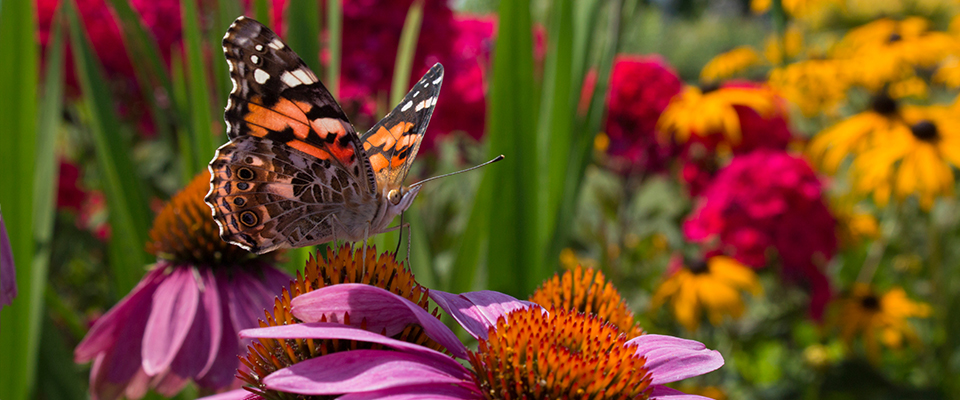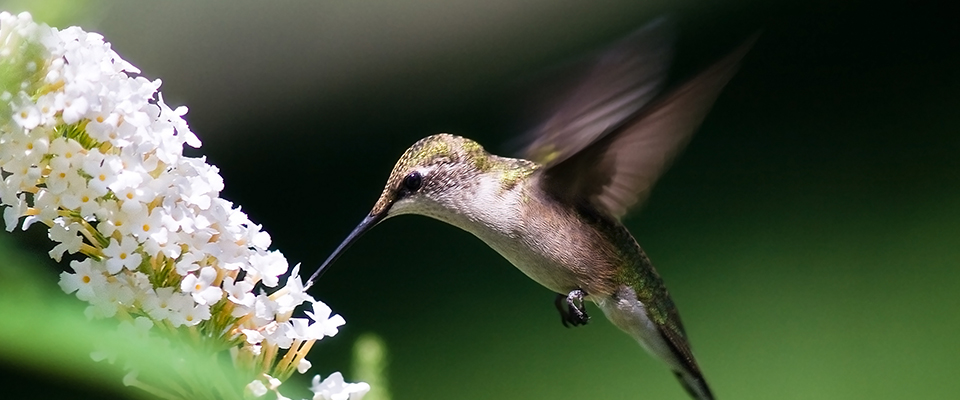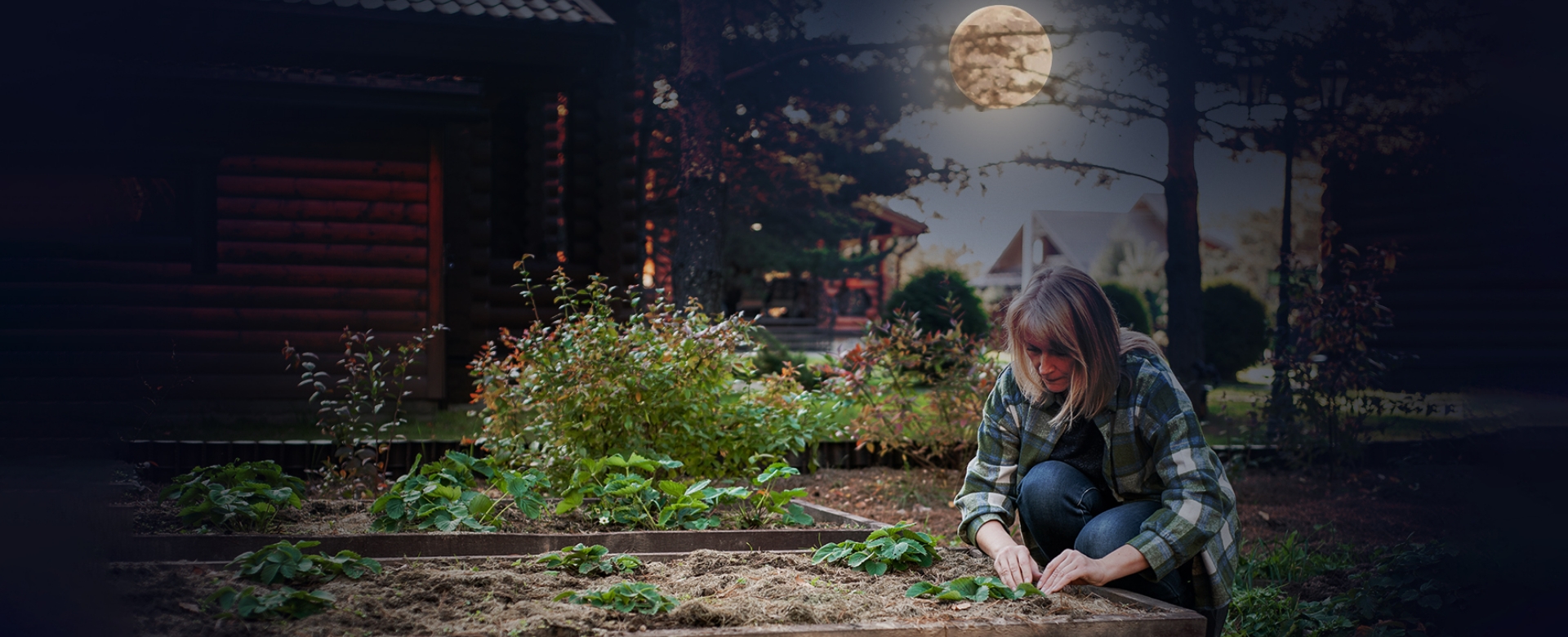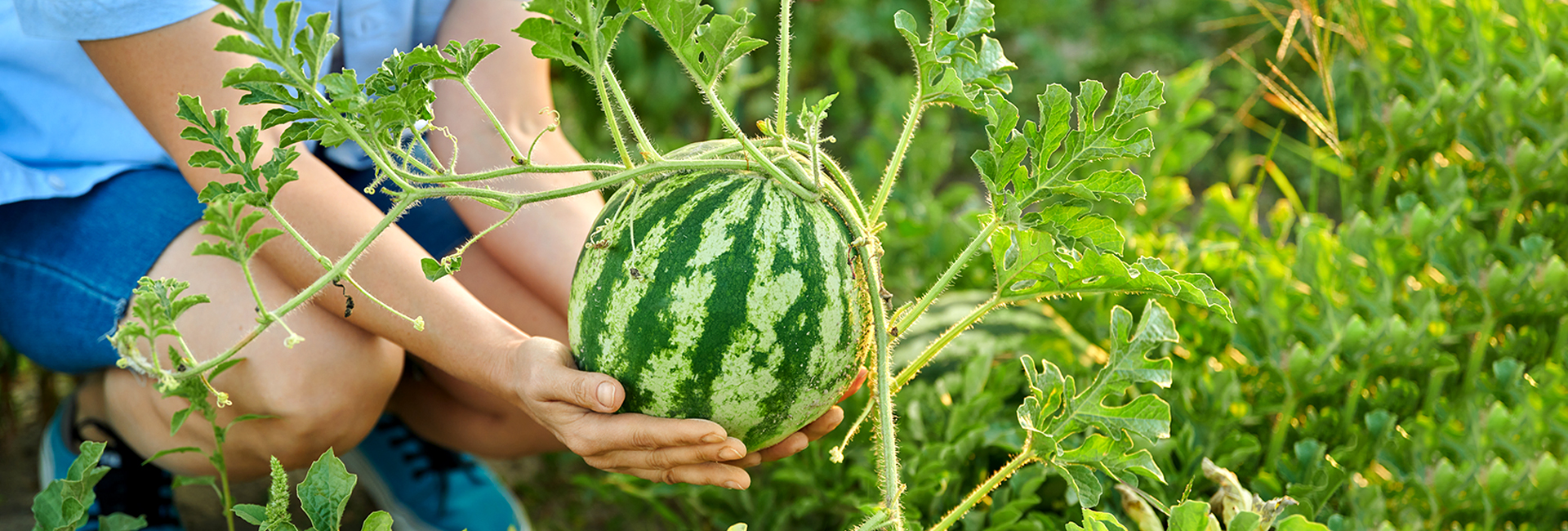Have you ever wanted to create a garden that’s in harmony with the environment? A garden that supports local wildlife?
Often times, gardeners want to keep wildlife out, especially with vegetable gardens. However, wildlife gardening is different. The goal is to build and enhance the surrounding ecosystem in your yard with native plants and landscape structures.
Do you want to build a wildlife garden? Or use wildlife gardening principles in your own yard?
Check out our guide to learn what wildlife gardening is, native plants you can grow, key principles and tips for getting started.
What Is Wildlife Gardening?

Wildlife gardening refers to the practice of building a garden that co-exists with local wildlife. The goal is to promote biodiversity and establish a well-balanced ecosystem right in your own backyard.
Therefore, wildlife gardening shares principles with pollinator and butterfly gardens; however, it considers the ecological impact of the garden on insects, mammals, birds and the soil.
Ultimately, a true wildlife garden exists in harmony with nature. Your aim is to create a natural, native ecosystem that supports and provides habitat to all critters and insects that call your yard home.
Key Concepts of a Wildlife Garden

Before jumping into how to start a wildlife garden, consider these principles:
1. Support Biodiversity: Wildlife gardens foster a diverse range of plant and animal species within a garden, contributing to a healthier and more resilient ecosystem.
2. Native Plants: Gardening for wildlife with native plants is a fundamental principle. These plants are well-adapted to the local environment, providing essential resources for native wildlife and supporting ecosystem balance.
3. Habitat Creation: Design the garden to provide suitable habitats for a variety of creatures, including nesting areas, water features, and shelter. This encourages the presence of diverse wildlife.
4. Sustainable Practices: Utilize eco-friendly and sustainable gardening practices, such as composting, mulching, and avoiding chemical pesticides. This contributes to the overall health of the environment.
5. Pollinator Support: Wildlife gardening actively promotes the well-being of pollinators, such as bees and butterflies, by including plants that provide nectar and pollen.
6. Water Features: The incorporation of water sources, like bird baths or ponds, attracts a range of wildlife, from birds to amphibians. This contributes to the overall biodiversity of the garden.
7. Education and Awareness: Gardening for wildlife encourages an understanding of local ecosystems, promoting education and awareness about the importance of biodiversity and ecological balance.
8. Year-Round Interest: Design the garden to provide food and shelter throughout the seasons. This ensures a continuous attraction of wildlife, creating a dynamic and evolving environment.
9. Maintaining a Peaceful Environment: Allow natural processes to unfold and minimize unnecessary disturbance in the garden. This helps create a more stable and self-sustaining ecosystem.
10. Adaptability: Recognize that wildlife gardening is an evolving process. You should remain open to adapting your practices to better suit the needs of the local ecosystem and its inhabitants.
Tips for Wildlife Gardening

As you start to build your wildlife garden, these tips can help you get started and to do it right:
1. Reduce Lawn Space
Tip: Minimize traditional lawns, which offer limited habitat value. Replace some grass with native plants to create diverse ecosystems.
Reimagine your outdoor space beyond the conventional manicured lawn. Native plants are not only visually appealing but also serve as critical components of a thriving ecosystem. Reduce the extent of your lawn, allowing room for native plantings that attract pollinators, provide habitat for insects, and contribute to a healthier environment. Diverse plantings encourage biodiversity and foster a more sustainable and resilient landscape.
2. Foster a Haven for Butterflies
Tip: Include nectar-rich flowers like milkweed, coneflower, and butterfly bush to attract and support butterflies. Provide host plants for caterpillars, such as milkweed for monarchs.
To cultivate a butterfly-friendly garden, focus on planting nectar-rich flowers that specifically appeal to these delicate pollinators. Milkweed, coneflower, and butterfly bush are excellent choices. Additionally, incorporate host plants like milkweed to provide breeding grounds for caterpillars. By supporting both adult butterflies and their larvae, your garden becomes a haven for the complete life cycle of these captivating insects.
3. Sustain Feathered Guests
Tip: Set up bird feeders with a variety of seeds to attract different bird species. Include suet or fruit to cater to diverse dietary preferences.
Creating a bird-friendly environment involves providing a variety of foods to attract different bird species. Bird feeders stocked with a mix of seeds, suet, and fruit cater to the varied dietary preferences of birds. This encourages a diverse avian population to frequent your garden, contributing to its dynamic and lively atmosphere.
4. Make Conscious Planting Choices
Tip: Prioritize native plants that support local wildlife. Choose a variety of species that bloom at different times to provide continuous food sources.
Conscious planting involves selecting native species adapted to your region’s climate and soil conditions. Native plants are well-suited to local wildlife, offering food, shelter, and breeding sites. Choosing a mix of plants with staggered bloom times ensures a consistent supply of nectar and seeds, catering to the diverse needs of pollinators and other wildlife throughout the seasons.
5. Utilize Compost
Tip: Use compost instead of chemical fertilizers. Compost enriches the soil naturally, promoting healthier plant growth without harmful environmental impacts.
Composting is an eco-friendly alternative to chemical fertilizers. Compost enhances soil fertility, structure, and moisture retention. By utilizing compost, you contribute to a healthier soil ecosystem, promoting the growth of robust and resilient plants while minimizing the environmental impact associated with synthetic fertilizers.
6. Provide Water Sources
Tip: Install bird baths, shallow containers, or small ponds to offer water for drinking and bathing. Ensure the water source is accessible and kept clean.
Water sources are essential for wildlife. Installing birdbaths, shallow containers, or even small ponds creates inviting spaces for birds and other creatures to drink, bathe, and cool off. Regularly clean and refill these water features to ensure they remain attractive and safe for wildlife.
7. Create Nesting Sites
Tip: Allow some areas of your garden to grow naturally to provide shelter and potential nesting sites for birds and insects.
Allowing certain areas of your garden to grow in a more natural state provides valuable shelter and potential nesting sites for birds and insects. This unmanicured space encourages biodiversity, supporting a variety of species that find refuge in the less disturbed corners of your garden.
8. Avoid Pesticides
Tip: Minimize or eliminate the use of chemical pesticides, as they can harm beneficial insects and disrupt the natural balance of your garden.
Steering clear of chemical pesticides is crucial in maintaining a healthy and balanced ecosystem. These substances can harm beneficial insects, disrupt the food chain, and have long-lasting negative effects on the environment. Embrace natural pest control methods and tolerate a certain level of insect activity, as it contributes to a more resilient garden.
9. Plant for All Seasons
Tip: Select plants that bloom at different times of the year to ensure a continuous food supply for wildlife throughout all seasons.
A well-rounded wildlife garden provides sustenance year-round. Choose a variety of plants that bloom in different seasons, ensuring a continuous and diverse supply of nectar, seeds, and other resources for wildlife. This approach attracts and supports a broad range of species throughout the entire year.
10. Create Refuge for Wildlife
Tip: Include shrubs, trees, and other vegetation to offer shelter and hiding spots for wildlife. Brush piles or log stacks can serve as additional shelter.
Incorporating various forms of shelter is essential for wildlife. Trees, shrubs, and dense vegetation provide hiding spots and refuge for birds and small mammals. Brush piles or log stacks create additional shelter options, enhancing the habitat value of your garden and supporting a diverse range of wildlife.
Plants Ideal for a Wildlife Garden
To promote biodiversity in your wildlife garden, consider including a diverse array of native plants that cater to various species. Here are some examples:
1. Purple Coneflower: Known for attracting a variety of pollinators, including bees and butterflies.
2. Joe Pye Weed: A tall perennial that provides nectar for butterflies and bees.
3. Blanket Flower: Its vibrant blooms attract bees, butterflies, and other pollinators.
4. Liatris: Also called blazing star or gayfeather, it attracts butterflies and provides seeds for birds.
5. Common Milkweed: Essential for monarch butterflies and a variety of pollinators.
Wrapping Up
In the realm of wildlife gardening, where conscious choices meet intentional designs, you can transform your backyard into a vibrant ecosystem. Embrace the wonders of biodiversity, one plant and one creature at a time. Let nature flourish in your own space, fostering a harmonious haven for both flora and fauna.
To explore the possibilities Homegrown Outlet can offer you, be sure to visit one of our locations today!




